Locust Valley, New York, United States
Architect: Charles Blair Macdonald (1923), Pete Dye (1985)
6,877 Yards, Par-71
Rating/Slope: 73.7/134
My Quick Review: Exceptional templates show Macdonald's genius in fitting his holes onto the land.
On a recent trip to New York that included several good to great golf courses, I came away from Piping Rock unimpressed. I told a few people that the course featured no bad holes, and a couple of standouts, but unlike The Creek it did not hit very high highs.
Nevertheless, two weeks removed from my trip, I find myself often thinking about Piping Rock. Perhaps my impression of the course was overly affected by its rather uninteresting start and meek finish.
Unlike The Creek, where the best holes are the non-template holes, Piping Rock's best holes (and several are exceptional) are the templates. The Redan, Road, Biarritz, Alps and Knoll are all very FUN golf holes.
It seems the course is constantly changing. New tees have been added on many holes, bunkering has been added/removed/moved/re-shaped; though the greens are seemingly intact -- that is, there is no obvious loss of putting surface.
Take, for example, these aerials of the par-5 6th hole (the first stolen from Dean DiBerardino):
Below is an aerial from December of 1953. Looks like a few changes from 1953 to 1966 as well....

here are some aerials from 1966, 1994, 2003 and 2012.
Notable changes:
1) A large-scale bunker in the left-side of the DZ was eliminated between 1966 and 1994. In 2011/2012 a series of 3 bunkers were added slightly farther up the fairway on the LHS.
2) A bunker on the RHS of the DZ was added between 1966 and 1994 (let's guess 1985
 . Scale has since been reduced.
. Scale has since been reduced.3) Cross-bunkers running diagonally across the fairway have been made less-intrusive.
4) Bunker protecting RHS of lay-up area added between 1966 and 1994 (let's guess 1985 again).
5) THE MOST NOTABLE CHANGE, between 1994 and 2003 the green was expanded by at least 1/3 at the front, and in 2003 several feet were added to the front-left portion of the green.






Piping Rock starts slowly with a pair of straightaway, mid-length par-4s. On each of the opening two holes bunkers flank the sides of the driving zone giving the golf course the 'championship' feel we are used to from so many courses today, but is a departure from the strategic design I expect to see from CBM.

Like the Principal's Nose bunkers at Yale, Essex County and Yeaman's Hall, the Principal's Nose at Piping Rock is an out-of-play hazard after a well-struck drive but complicates matters for those trying to advance their ball from the rough.

The approach to the 2nd green:

The 187 yard Redan 3rd is a very good hole and is cited by many as the best example of the redan template. From what I've seen there are two styles of redan: (1) those where the fairway and kickplate collect the ball toward the green, and (2) those where the kickplate will stop the ball from advancing toward the green. The redans at National, The Creek and Sleepy Hollow are good examples of the first style, while the redans at Shinnecock Hills, Somerset Hills and Piping Rock are examples of the latter style.

The green tilts from front-left to back-right making recoveries from this back bunker a delicate task.

The fearsome front-left bunker:

Macdonald was not happy that he was forced to round his golf course around the polo fields immediately in front of the clubhouse. I am not sure the reason for this discontent as the land on which the polo fields lie is flat and featureless, though perhaps it would have helped Macdonald to avoid the back-and-forth routing of the 4th and 5th. Nevertheless, these two holes, each of which runs along a property line on the left side, are played to interesting, tilted terrain.
The 4th has been lengthened in recent years and now plays as a 445 yard par-4 with an extremely tilted fairway and a difficult approach to a sunken green.
Though almost 150 yards shorter than the 4th, I think the par-4 5th is the more interesting of the side-by-side holes. A top-shot bunker and fairway bunker 100 yards apart meld well to convince the golfer that there is little room to miss. The approach is a difficult one, played to a very small green that falls away from the golfer and is protected left and right by bunkers.

This view from the back of the 5th green shows the internal vistas on the front-9 at Piping Rock:
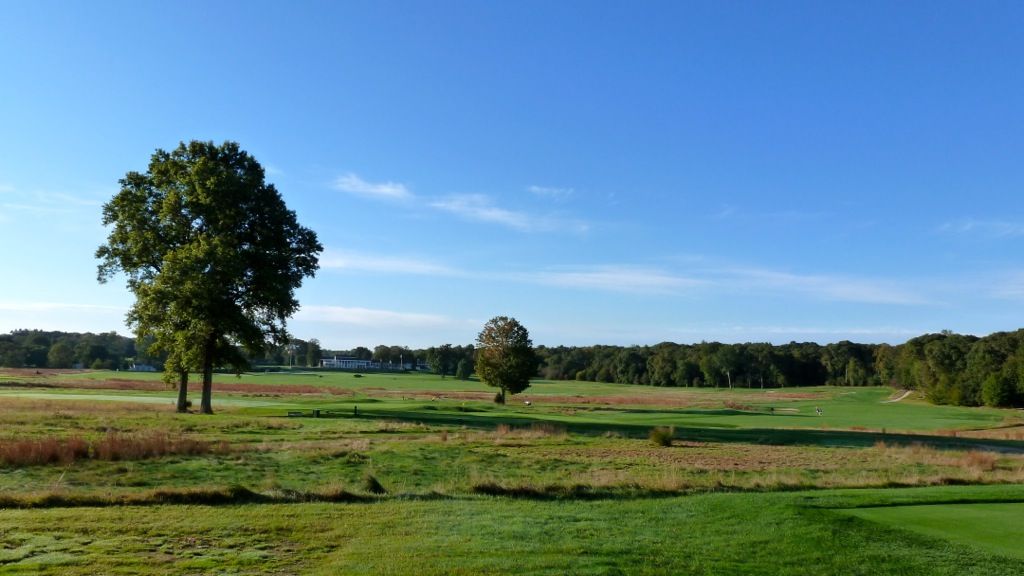
The 530 yard 6th is a mid-length par-5 on the scorecard, but both the tee shot and second shot are played to a fairway that tilt back toward the tee. In an earlier discussion, Pat Mucci asked whether the 6th is one of the great par-5s in golf:http://www.golfclubatlas.com/forum/index.php/topic,5659.html I think that is a bold question, especially for a hole that lay over such simple terrain and without the ocean as a backdrop. Though the 6th is clearly the better of the two par-5s at Piping Rock, I can't see it among the best in golf; heck there are at least 5 better par-5s on Long Island.


The 7th is a difficult, straightaway par-4, but like the opening duo of holes, failed to capture my attention.

The 8th is Road and it is an excellent rendition. For the scratch man the hole had become a pushover and a back tee added some 75 yards to the hole. From the Blue tee the hole plays 380 yards and asks the golfer to risk playing over the fairway bunkers and flirt with the trees to leave the ideal line into the green.




The 9th is Biarritz and plays near 230 yards from the back tee to a green whose front portion of the swale is mowed as fairway.

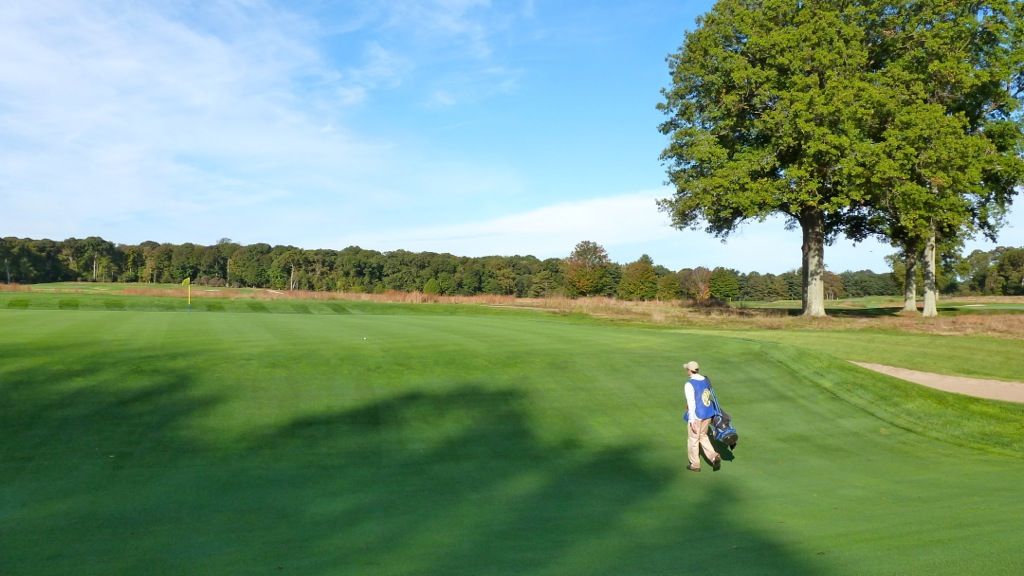
The long, uphill par-5 10th introduces the golfer to the more interesting terrain that he will enjoy for the entire back-9. Unlike the 4th/5th holes where the dominant movement in the land is across the golf holes, in all cases on the back-9, Macdonald routed the holes up and down the land. The bunker scheme at the 10th is simple and effective.

The 11th is Eden, and at 202 yards it is the longest version of the hole I have seen. Eden must be the most wide-ranging of the par-3 templates, as many of the holes have little similarity (to my eye) other than a severe back-to-front tilt and the word Eden on the scorecard.

The 12th is called Apple Tree but like the 4th at Fishers Island, it is a wonderful Alps/Punchbowl combo. Only a tee shot that boldly challenges the bunkers on the right side of the fairway (partially hidden in the shadows) has any hope of a view of the flag, while a tee shot up the left is played over a cavernous fairway bunker.


Hole 13 is knoll and at just under 300 yards it is driveable by some. The tee shot is completely blind and the fairway is slightly left of where one would expect and protected left and right by bunkers.

A small and very contoured volcano green at the 13th. Missing pin-high left or right, or long, is a disaster.

The 14th is a long par-4 that, a bit like the 7th, is difficult but forgettable.
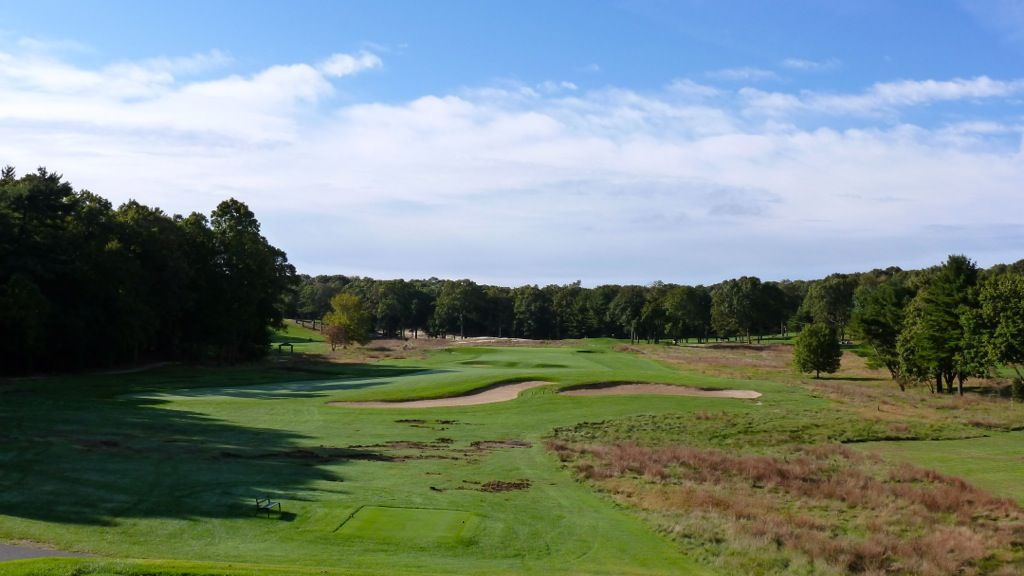
15 returns the golfer to the interesting terrain. The tee shot must be placed between a series of flanking bunkers before playing an uphill approach to the most interesting green on the golf course.

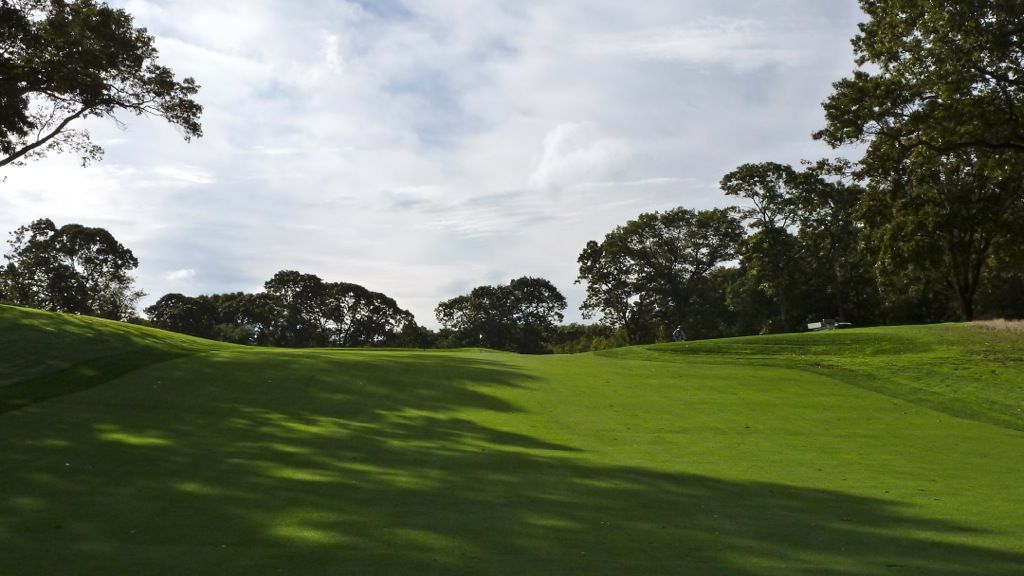
The green is protected long/right by a built-up landform and features a wild, snaking spine that runs diagonally across the green.

16 is the second down then up par-4 of the back nine. The fairway is set at an angle from the tee and the bold line requires a carry over a series of carry bunkers.

A fairly simple approach visually but it is a difficult one. A false-front gives way to a green that falls noticeably away from the line of play.
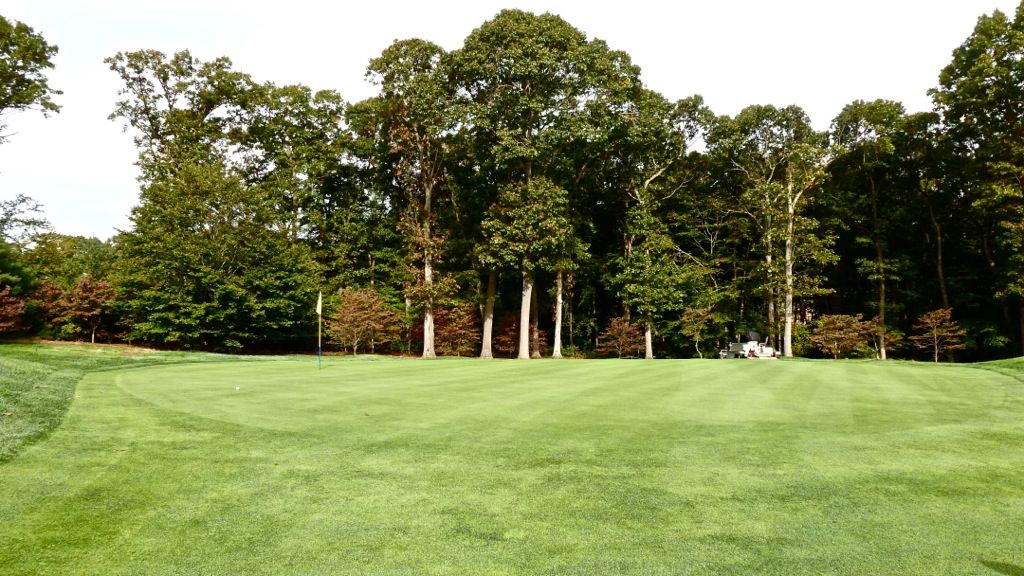
The Short is not so short near 170 yards.
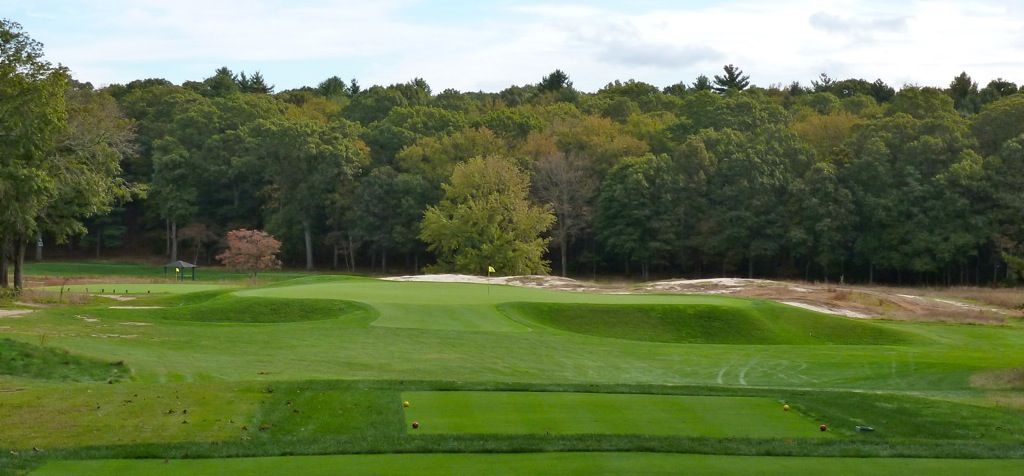

The 18th is a mid-length par-5. The Line of Instinct draws the golfer toward the bunker on the left, but carrying that bunker will leave the bold golfer in the rough.

The 18th crosses a road 70 yards short of the green before moving straight uphill to another green protected by a false-front.
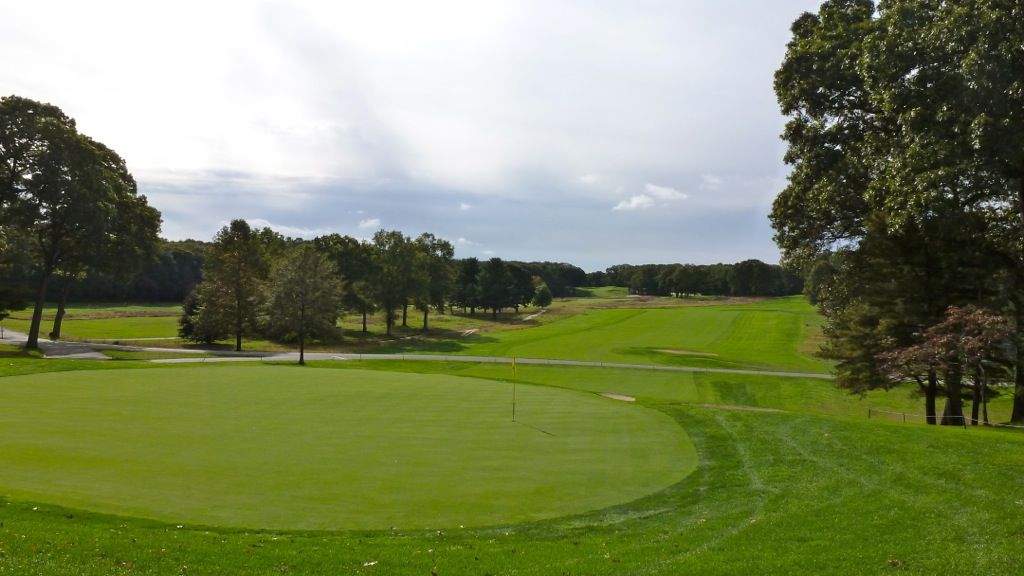

No comments:
Post a Comment